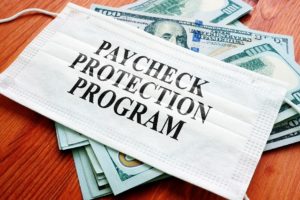Tax Saving Strategies For Business Owners
[vc_row][vc_column][vc_column_text]
Tax Saving Strategies For Business Owners
1. Did you know you can use your previously funded IRA to fund the current year’s deductible contributions?
Well, you can. If you don’t have enough cash to make a deductible contribution to your IRA by April 15th, here is how you can still take the tax deduction. And have until June 12th to make the full 4,000 contribution! To get started, all you need is a previously started IRA.
You begin by having $4,800 distributed to you from your IRA on April 15th. Your bank is required to hold 20% (income tax withholding), so you’ll actually receive $4,000. Once you have the $4,000, immediately deposit it back into your IRA. If you do this before April 15th, this counts as your deductible contribution for the year. The best part of this is that you have 59 days to “make up” the withdrawal-or to be taxed. Simply deposit $4,800 “rollback” into the same IRA account by June 12th to avoid taxes on the original $4,000 distribution made to you.
This is a type of short-term loan from your IRA to make this year’s deductible contribution before the April 15th due date.
NOTE: Not all banks realize it is required to withhold the 20% from the original $4,800 withdrawn from your IRA. Call to find out which way we can help you work with this “extra” amount. There are many options, so get informed before you miss out on the full benefits of your retirement plan.
2. We have a special retirement plan for you if you are self-employed and involved in more than one business.
This is for you if you are self-employed and involved in multiple businesses, even with partners.
A new tax act has made a change allowing you to contribute to a self-employed retirement plan, on your own behalf, without requiring you to make contributions on behalf of your employees. The new act has repealed the so-called aggregation rules that previously applied to the self-employed retirement plans.
Under the old rules, if a self-employed person owned, or was a part owner of more than one business, and a retirement plan was provided for the employees in one business, law required that a retirement plan be provided for the employees of the other business(es). Beginning in 1997, this law removed this requirement!
If you own two businesses, the law allows you the option of establishing a retirement plan for only one business (with the fewest employees), even if you work by yourself in that business! The only limitation for this new law is that the amount of money you can contribute to a retirement plan is based on the self-employment earnings generated by the business with the retirement plan.
In other words, if the business you own with (no employees) has smaller net earnings than the other business (with employees), the amount you can contribute to a retirement plan will be based on the smaller net earnings.
While the rule change allows you to avoid contributing to a plan for your employees, it also means that you would be limited to making the smallest (rather than the largest) potential contributions to your personal retirement plan.
3. You can have your landlord pay for leasehold improvements at your place of business.
Instead of paying for leasehold improvements at your place of business, you can ask your landlord to pay for them. In return, you offer to pay your landlord more in the rent over the term of the lease. By financing your leasehold improvements this way, both you and your landlord can save money on taxes.
Ordinarily, you must deduct the cost of leasehold improvements made to your place of business in an even fashion (over a 39-year period!). If the year your lease term ends you move to another location, you can deduct the portion of the improvement cost you have not previously deducted. This normal scenario won’t save you tax in the earlier years of the lease. Your landlord will have to put up the initial cash for the improvements, but you will cover that over time with increased payments in your rent. Since your landlord will be paying for the improvements, you will save tax early in the lease and your landlord will benefit as well!
During the same time, your landlord will gain depreciation deductions for the cost of the leasehold improvements. When you leave, your landlord will still have the improved property to offer other future tenants. It is a great opportunity for a win-win situation giving you faster access to invested monies.
4. Save by deducting home entertainment expenses.
You may not be able to treat your employees to meals at expensive restaurants or offer them season tickets, but you should deduct expenses for entertaining clients at home.
There are two basic kinds of entertainment expenses. The first being direct entertainment expenses and the second is associated entertainment expenses.
If you entertain at home for the purpose of business, and if the business takes place during the entertainment, then the cost of entertaining at your home is deductible as a direct entertainment expense. However, if the entertainment occurs immediately before or after a business meeting, the cost is deducible as an associated entertainment expense. These expenses are 50% deductible.
Many businesses are already enjoying this wonderful type of deduction and are benefiting from it with a more social climate for conducting their business.
5. You can deduct $25 Holiday gifts to associates even without a receipt!
When you prepare your income tax return, don’t overlook the deductible benefit of holiday gifts. Whether you are a rank-and-file employee, a self-employed individual, or even a shareholder-employee in your own corporation, you can deduct the cost of gifts made to clients and other business associates as a business expense. You can do this any time of the year. The limit of the deduction is set at $25 in value for each recipient for which the gift was purchased with cash.
A few years ago, the Tax Court allowed an independent salesperson to deduct gifts to buyers, even though the buyers’ employers prohibited the acceptance of such gifts. The Tax Court felt the gifts were not bribes but were a legitimate business expense. Because the gifts were small (less than $25, but totaling more than $2,000!), the taxpayer was not required to document the cash expenses with receipts. The entries in the salesperson’s daybook was acceptable proof.
6. Deduct your home computer.
This is an approach for saving more on your income tax return for people who purchase a computer and use it for work-related purposes. A recent Tax Court ruling may give you a tax deduction on your home computer. If you are an employee and want to deduct your computer, you first have to meet the requirement stating that the computer is used for convenience and as a condition of your employment. As a result of the Tax Court ruling, if your employer limits your access to a computer at work (for security reasons) but still requires that the work be completed, then you can deduct the portion of the cost of your computer that is allocable to business use.
7. Have your company buy you supper.
If you are in a partnership or a shareholder-employee in a regular C or S corporation, and you have to work overtime, your company can, on occasion, provide you with dinner. The cost of such a dinner is 100% deductible for your company, and you don’t even have to pay personal income tax on the value of the meal!
On top of this, your company does not have to provide this fringe benefit to other employees who work late. But your company does not have to directly pay you for the meal. Instead, it can provide you with supper money. In order for this to work, the amount of dinner money has to be reasonable.
If the IRS decides that the amount of money you received was unreasonable, the whole amount will be considered taxable personal income and will not be deductible.[/vc_column_text][/vc_column][/vc_row]
President Trump Signs Bill to Help Small Businesses with Paycheck Protection Program Flexibility
Press Release Friday June 5, 2020. This morning president Trump signed into law H.R.7010 to help small businesses. The purpose of the Paycheck Protection Program Flexibility Act is to amend the Small Business Act and the CARES Act to modify certain provisions related to the forgiveness of loans under the paycheck protection program, to allow…
Building a $24 billion company using the Sunflower Model | Rob Ryan
Building a $24 billion company using the Sunflower Model | Rob Ryan About ROB RYAN Rob Ryan founded Ascend Communications in 1989. Rob served as President, CEO, and Chairman of Ascend, taking it public Friday the thirteenth of May, 1994, at $13.00 per share. In 1995 Rob and Terry started Entrepreneur America. Rob gained his first experience…
Possible PPP Legislation & 1099-B
Possible PPP Legislation:
https://www.bloomberg.…
The PPP Loan Forgiveness Application
Deloitte Newsletter of House $3 Trillion tax bill…



